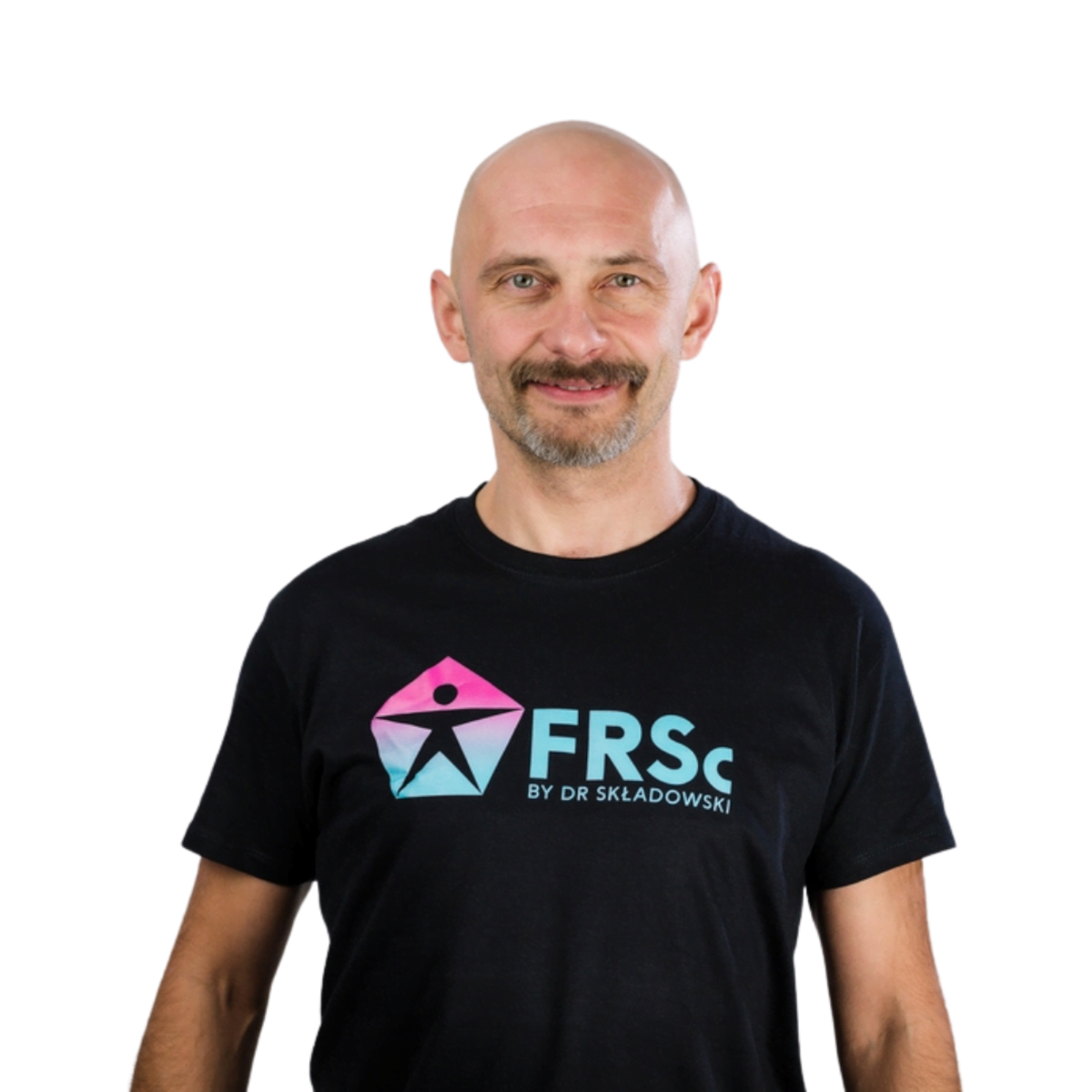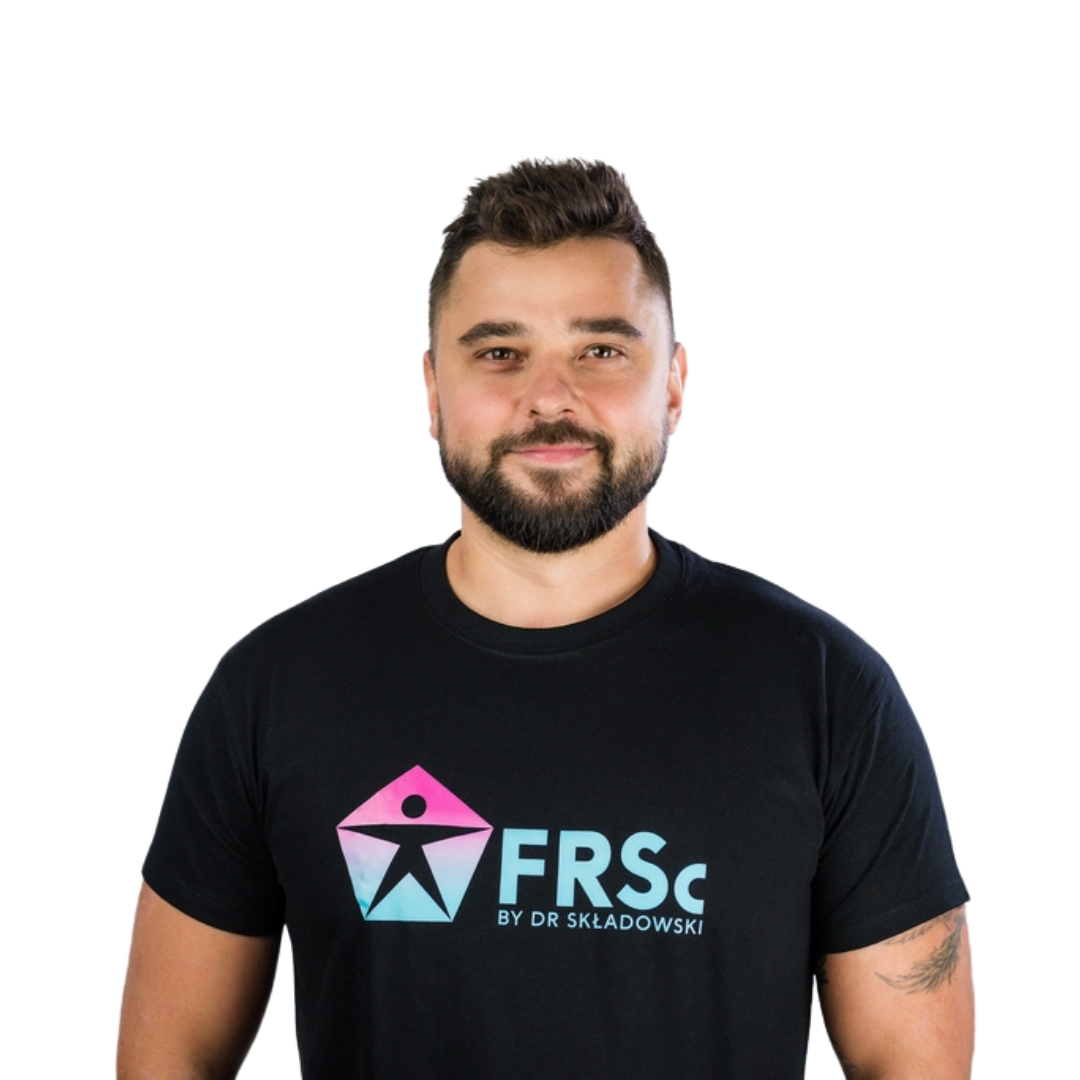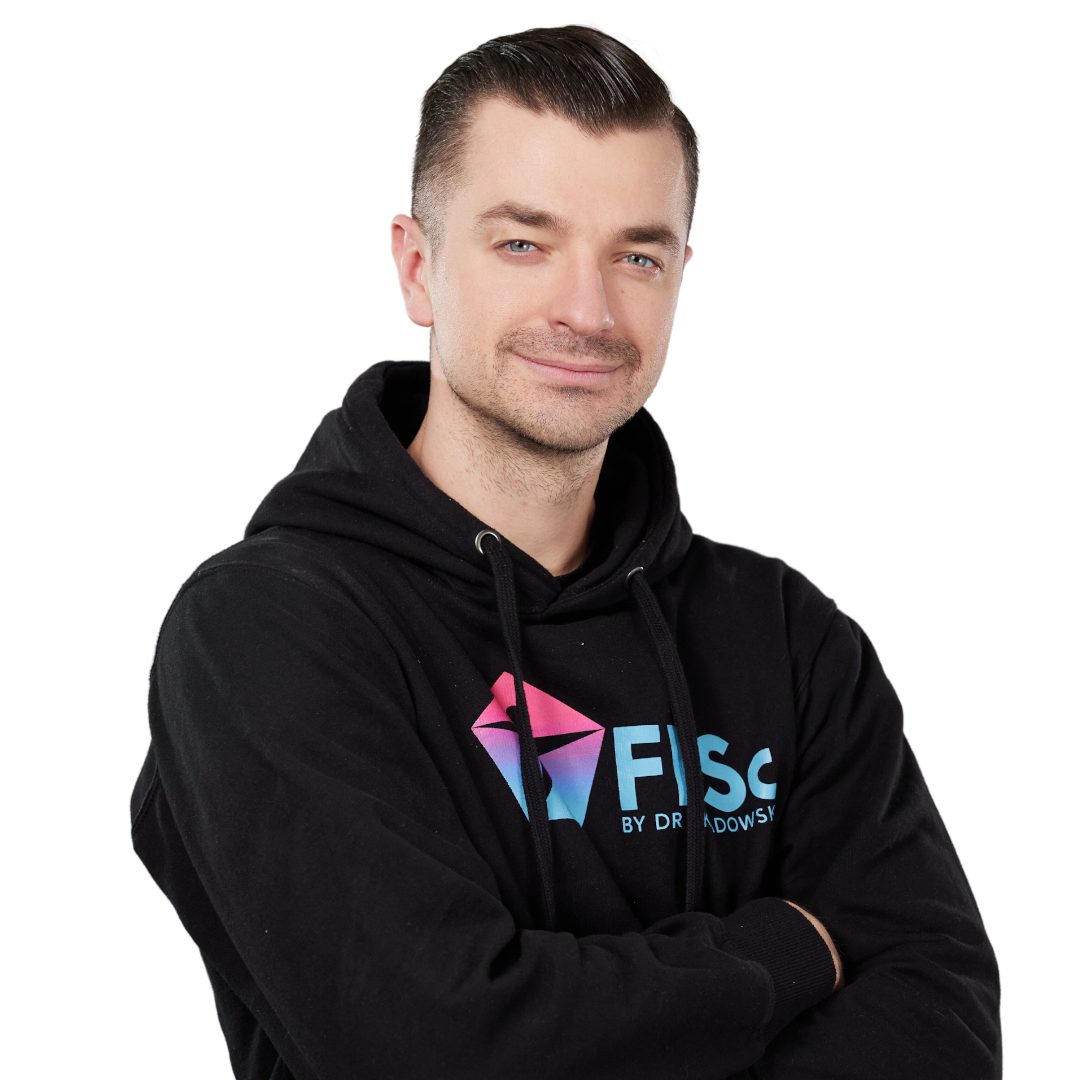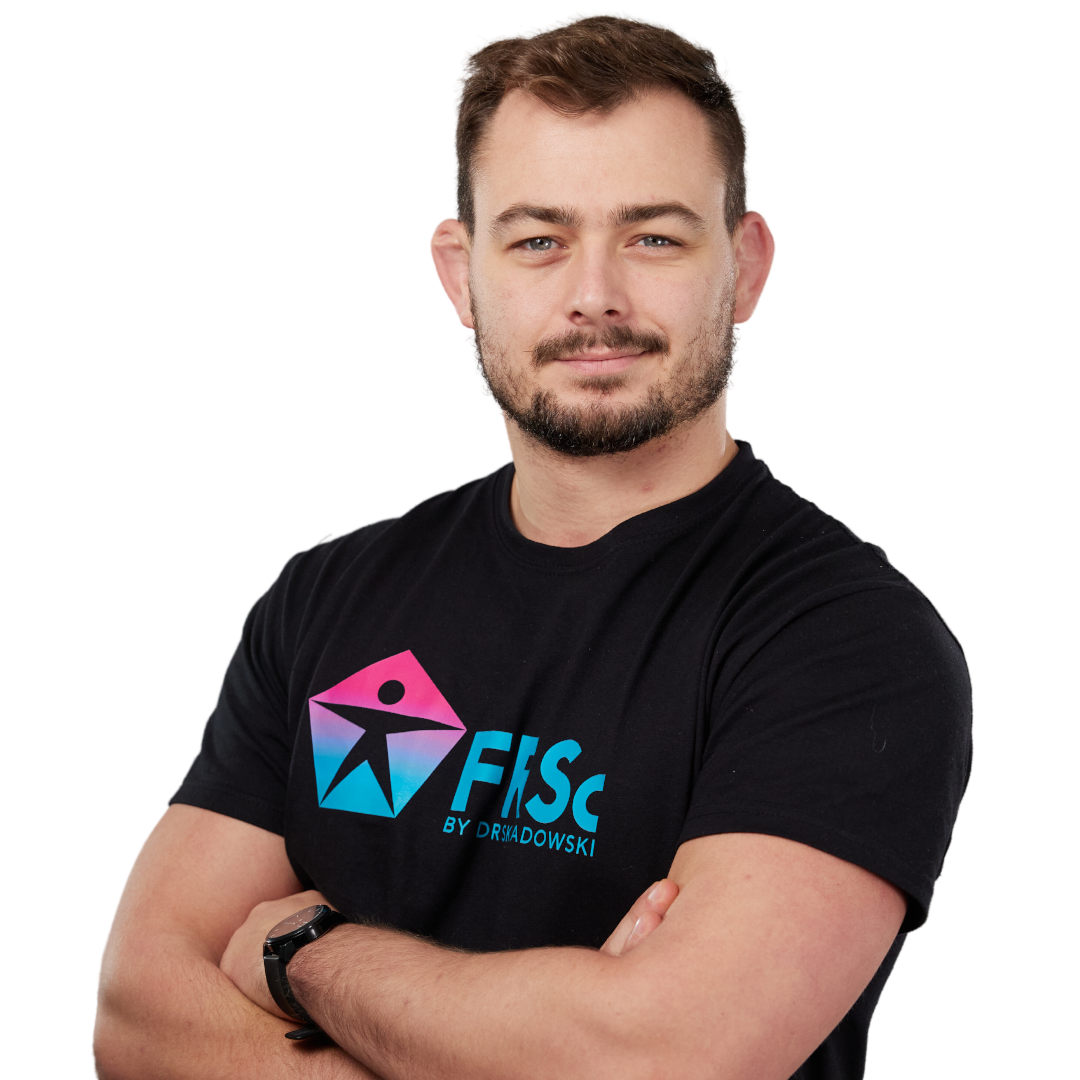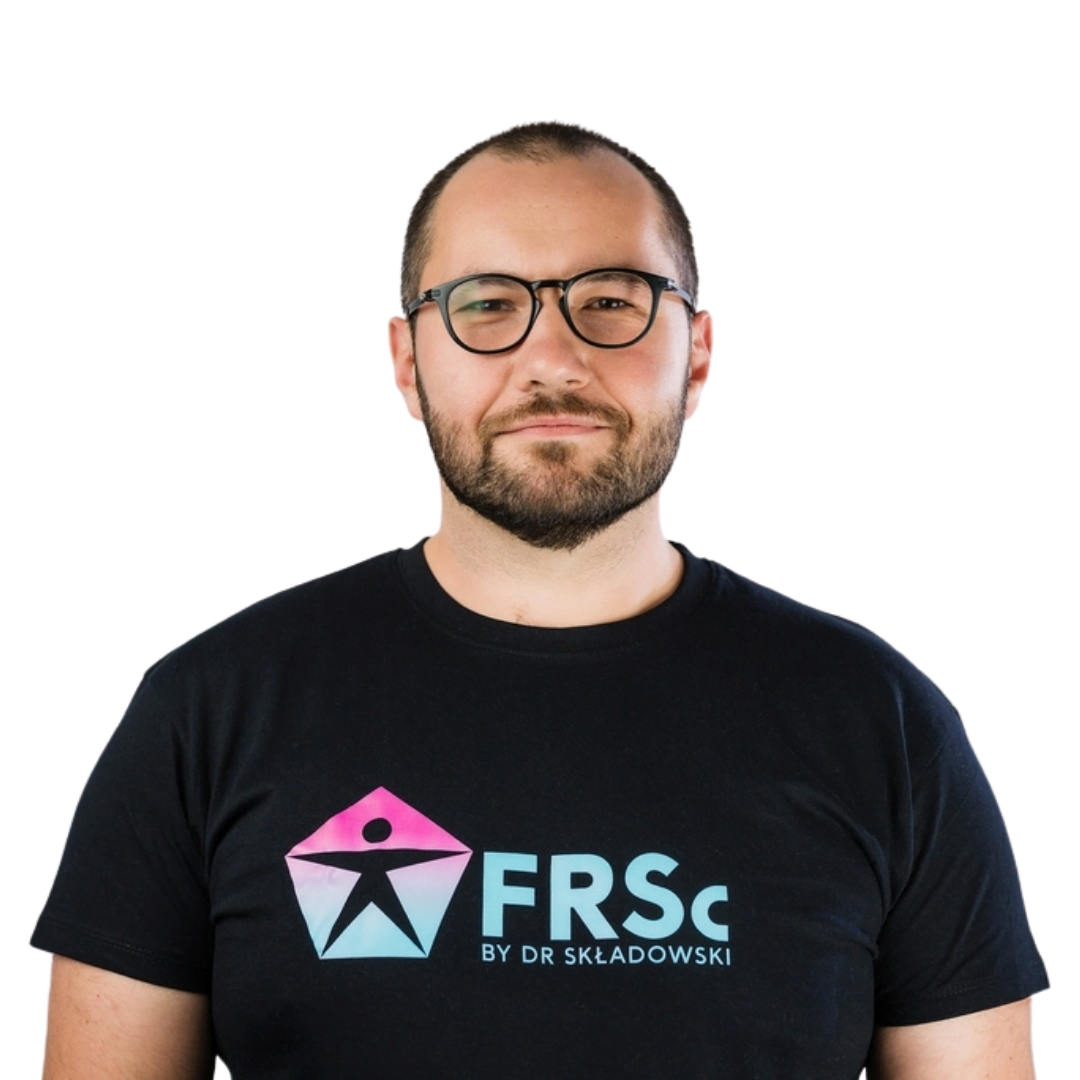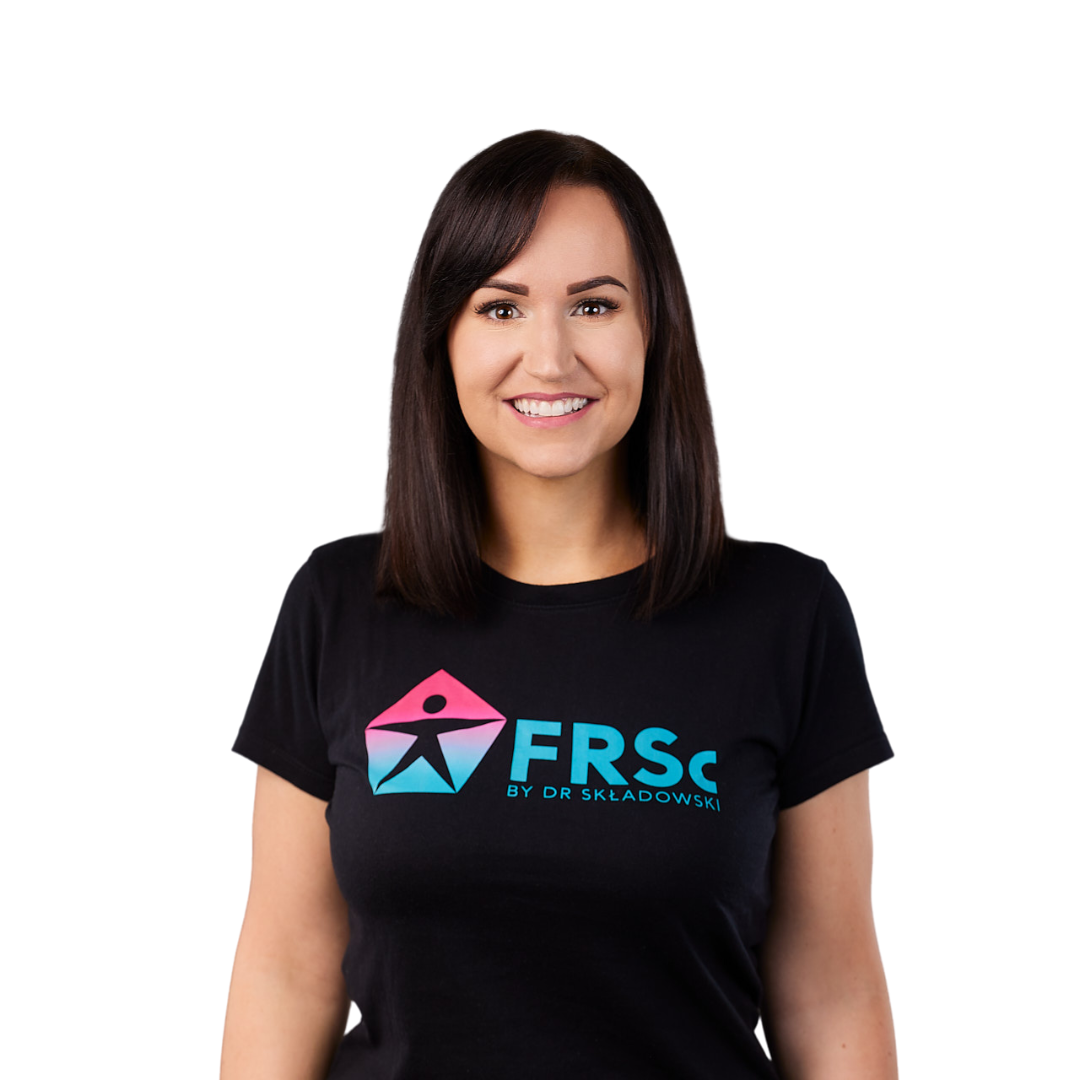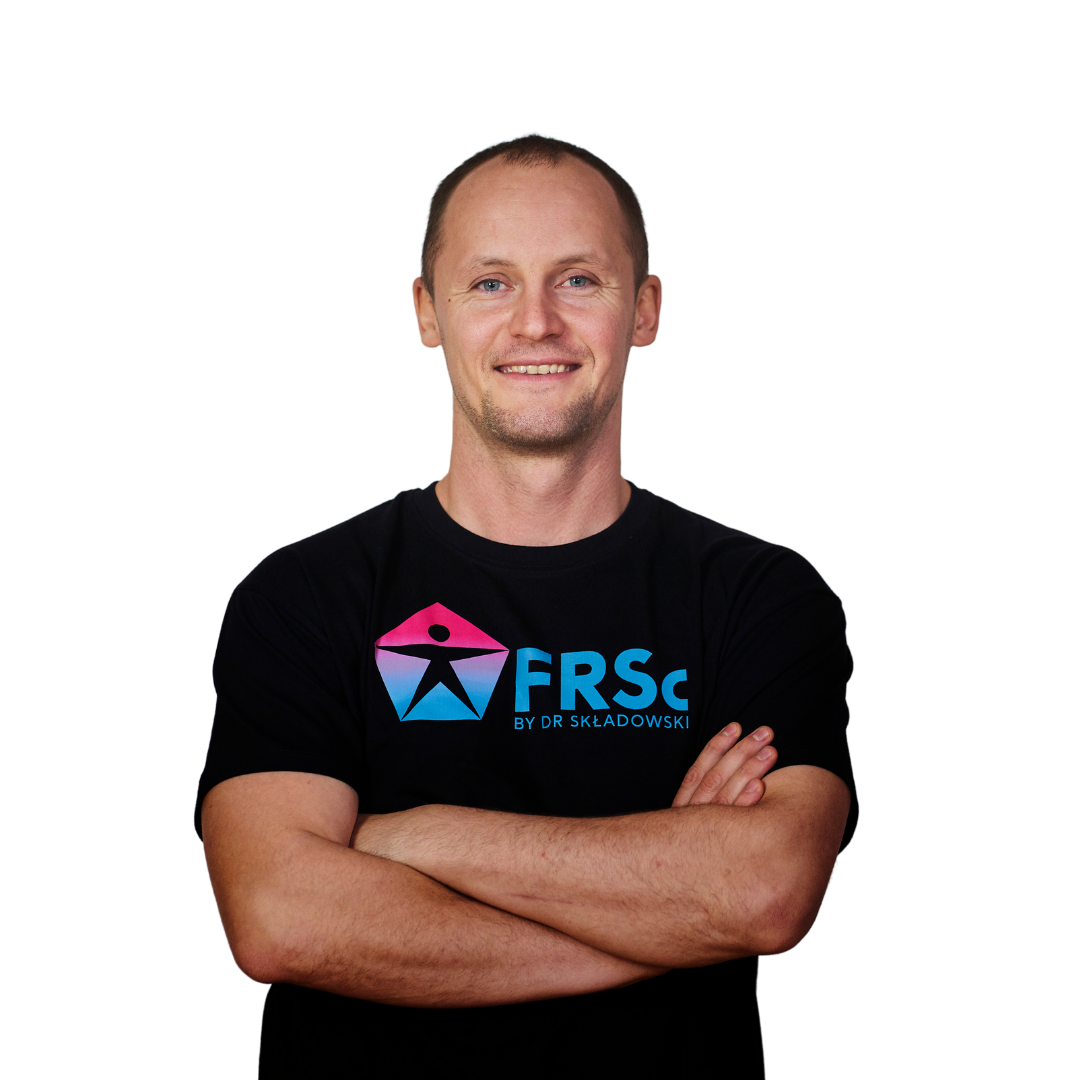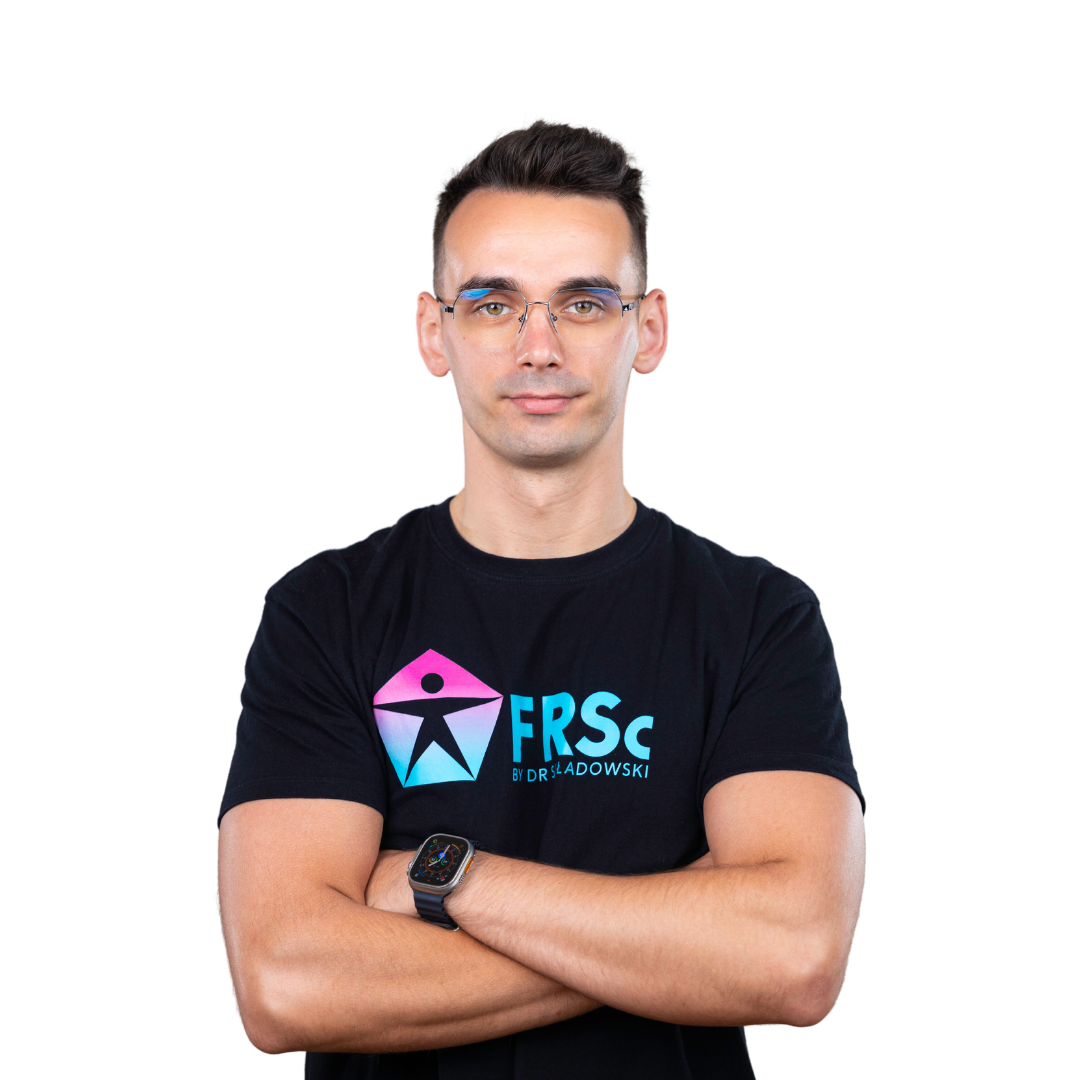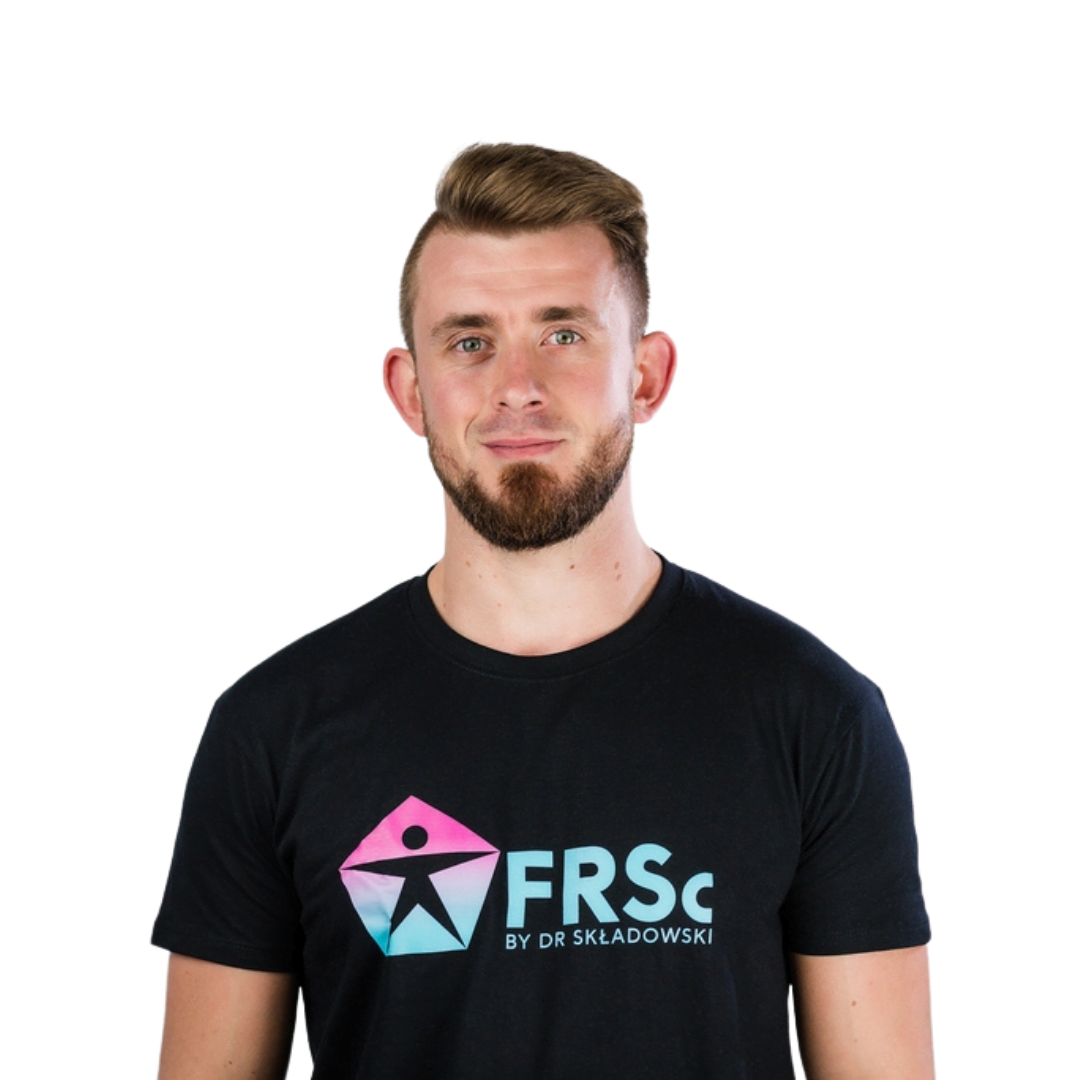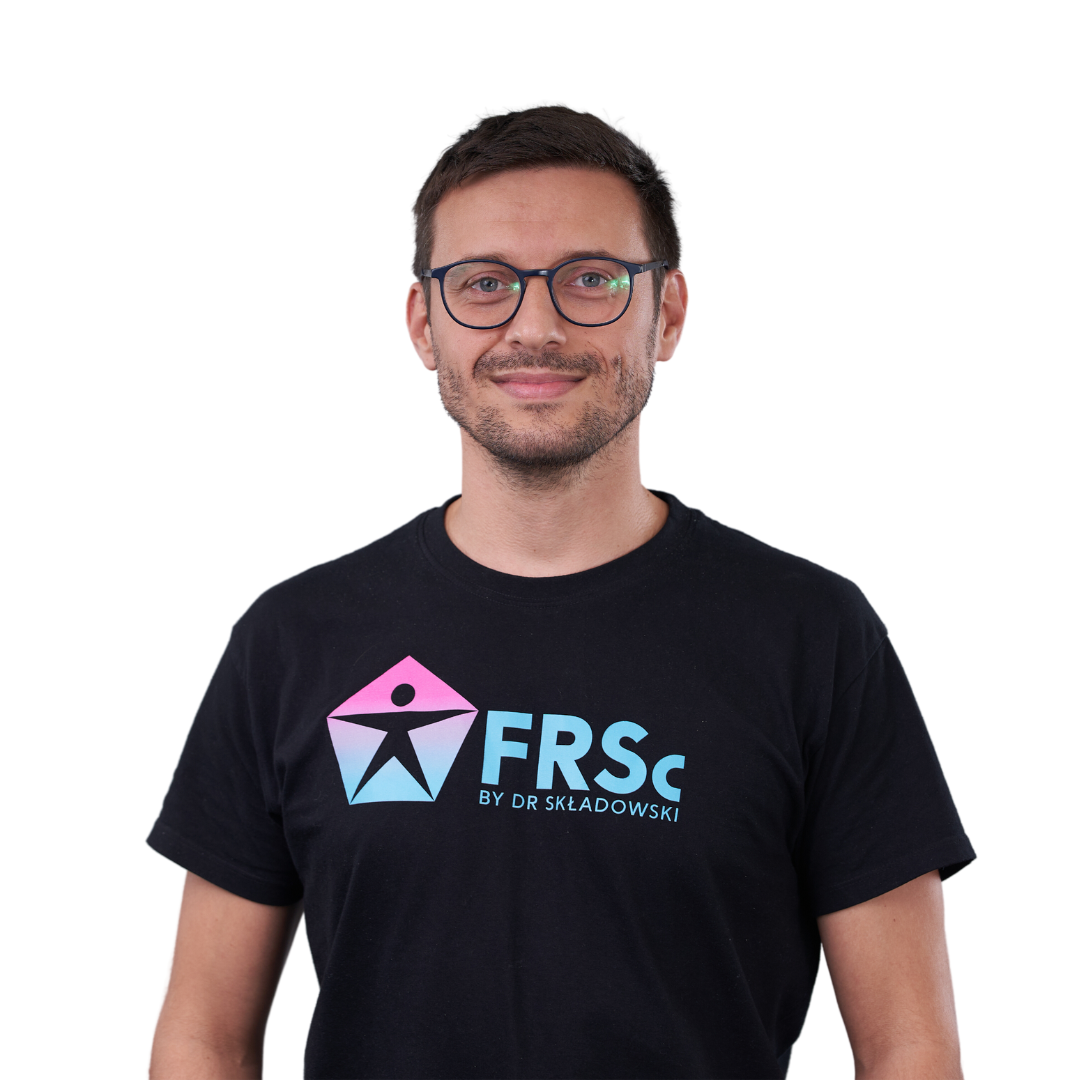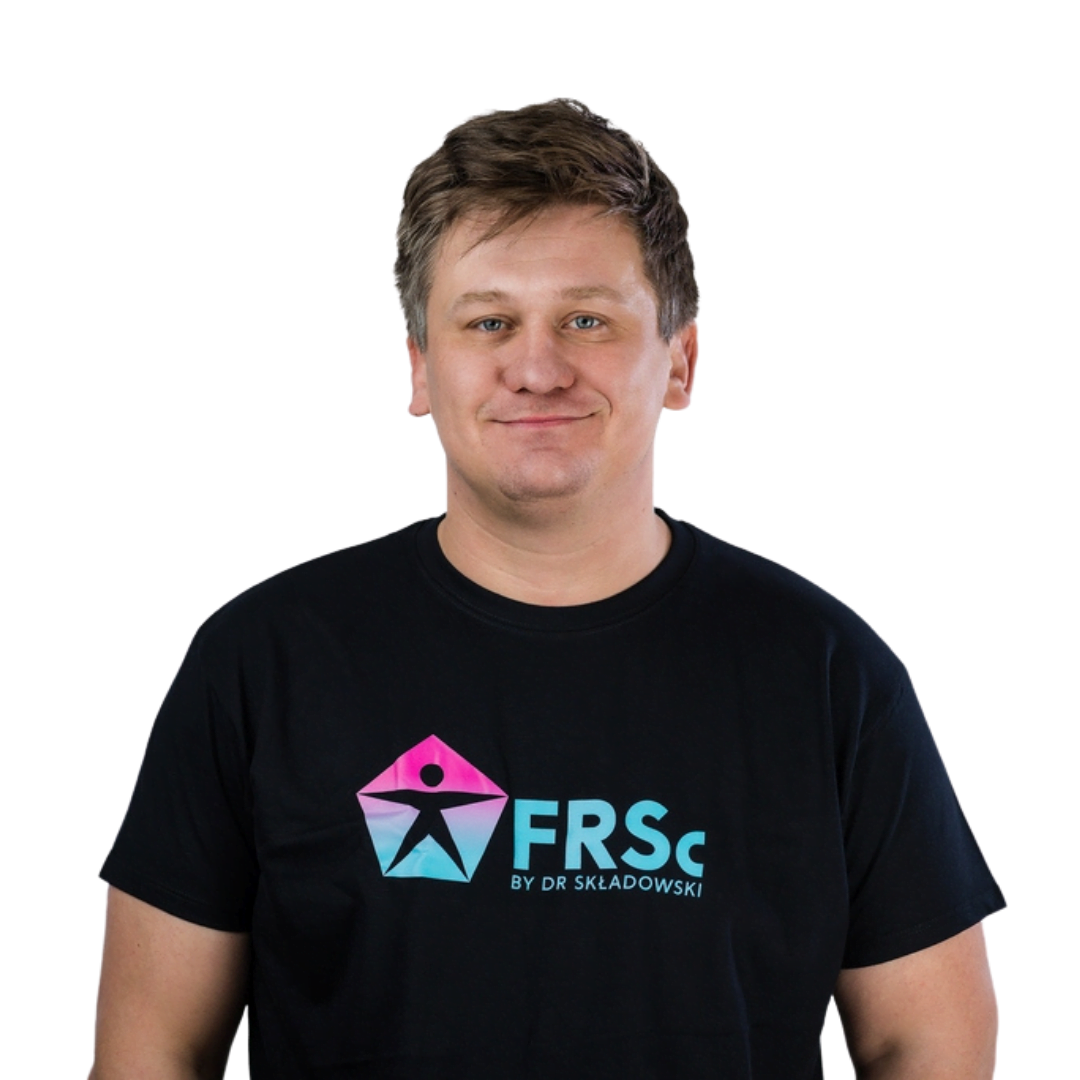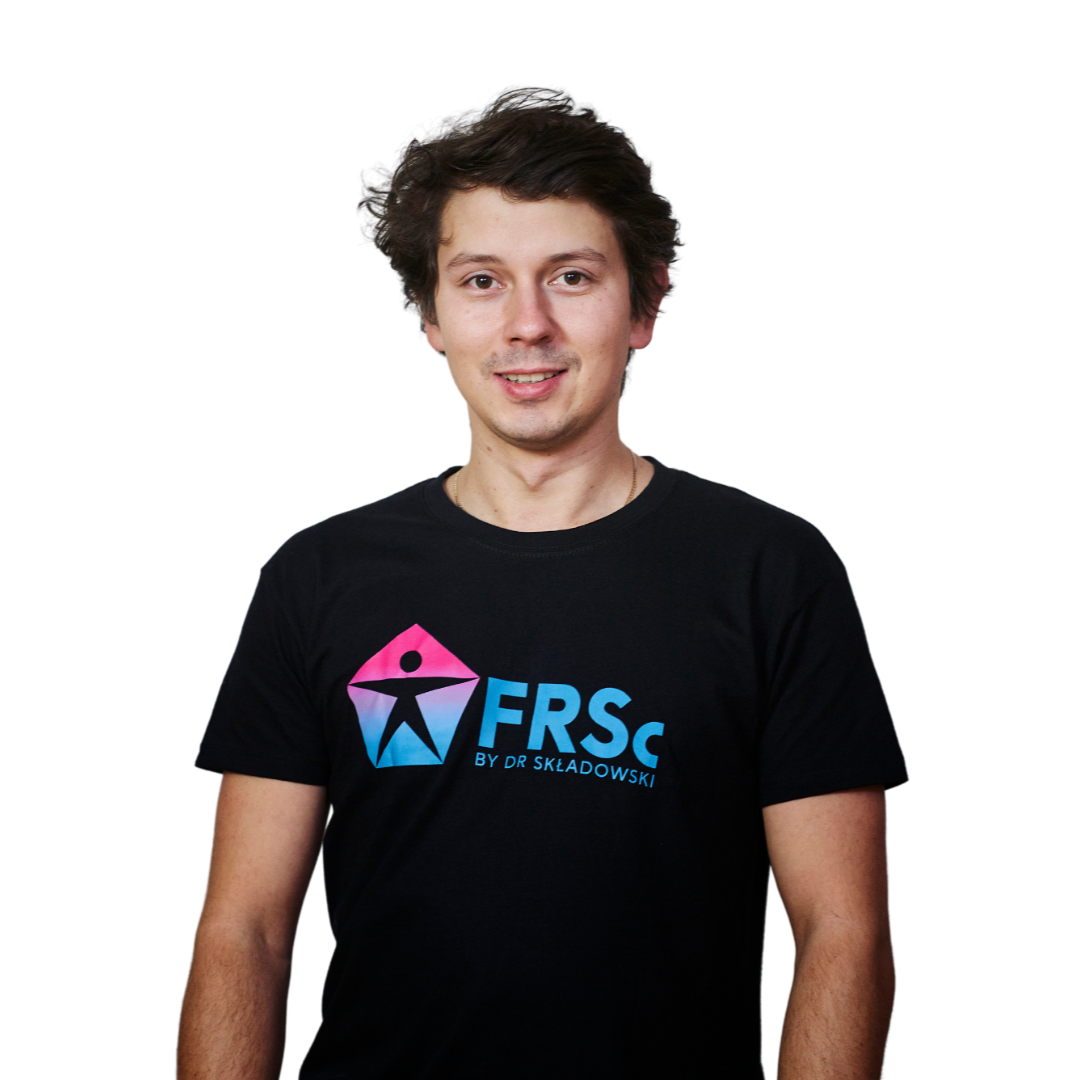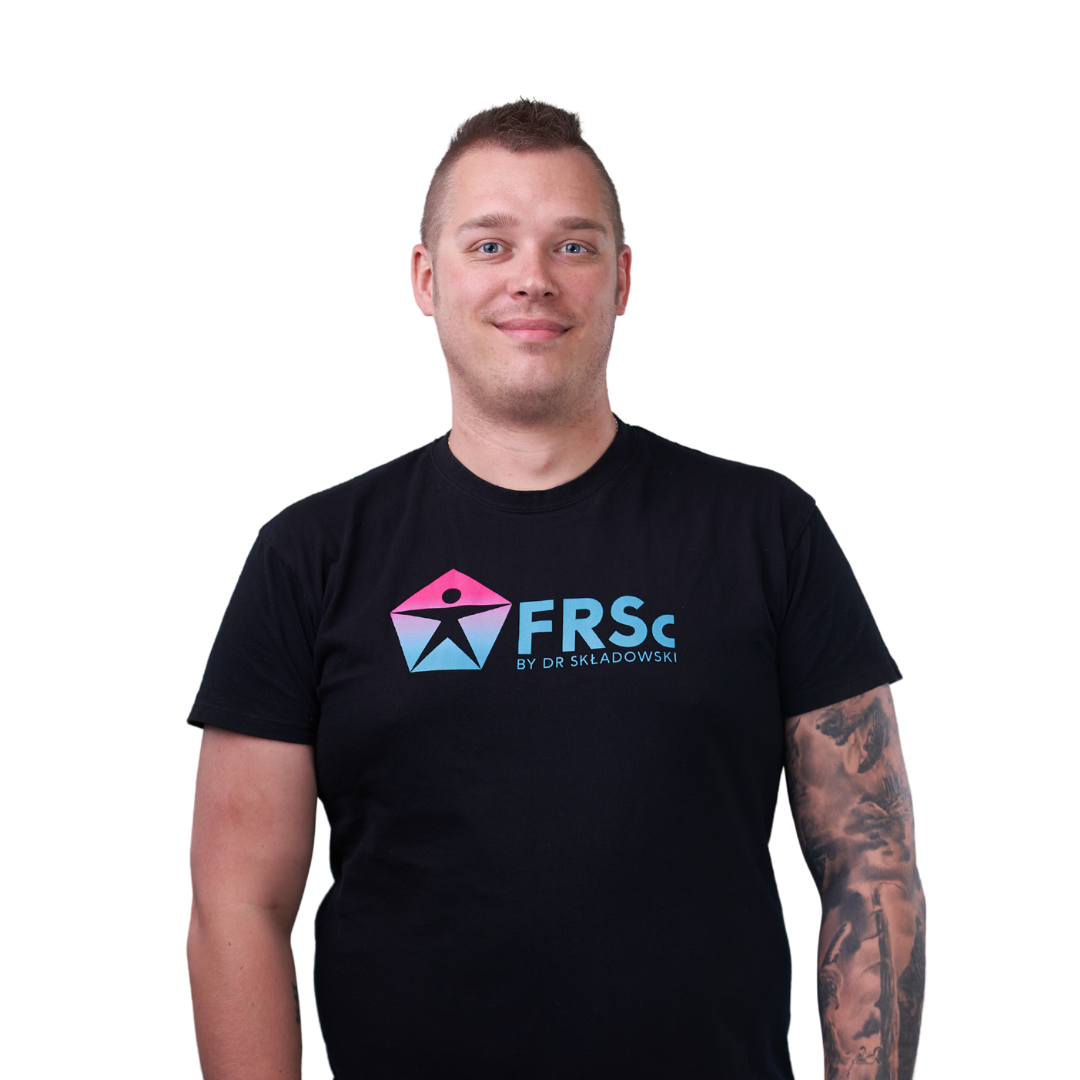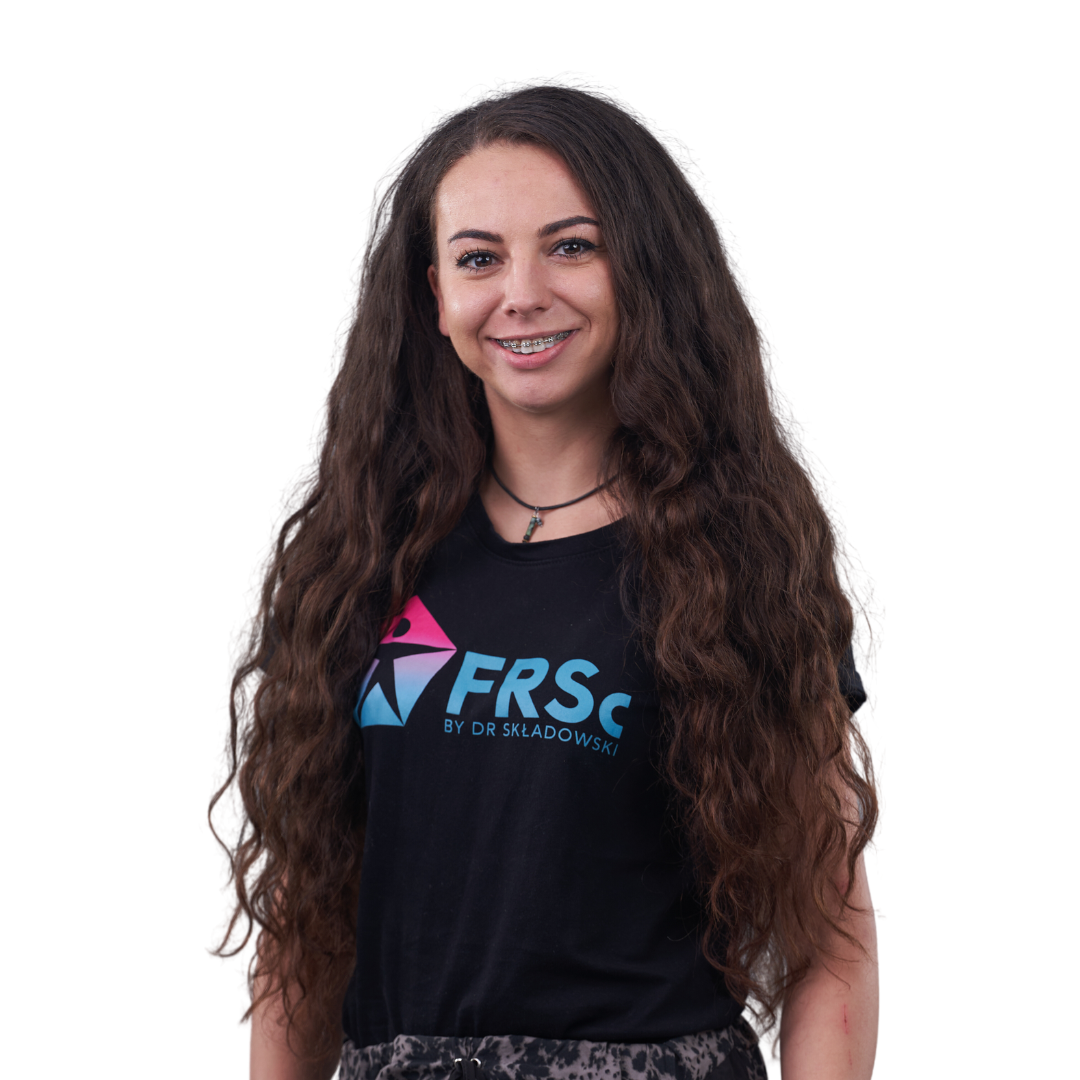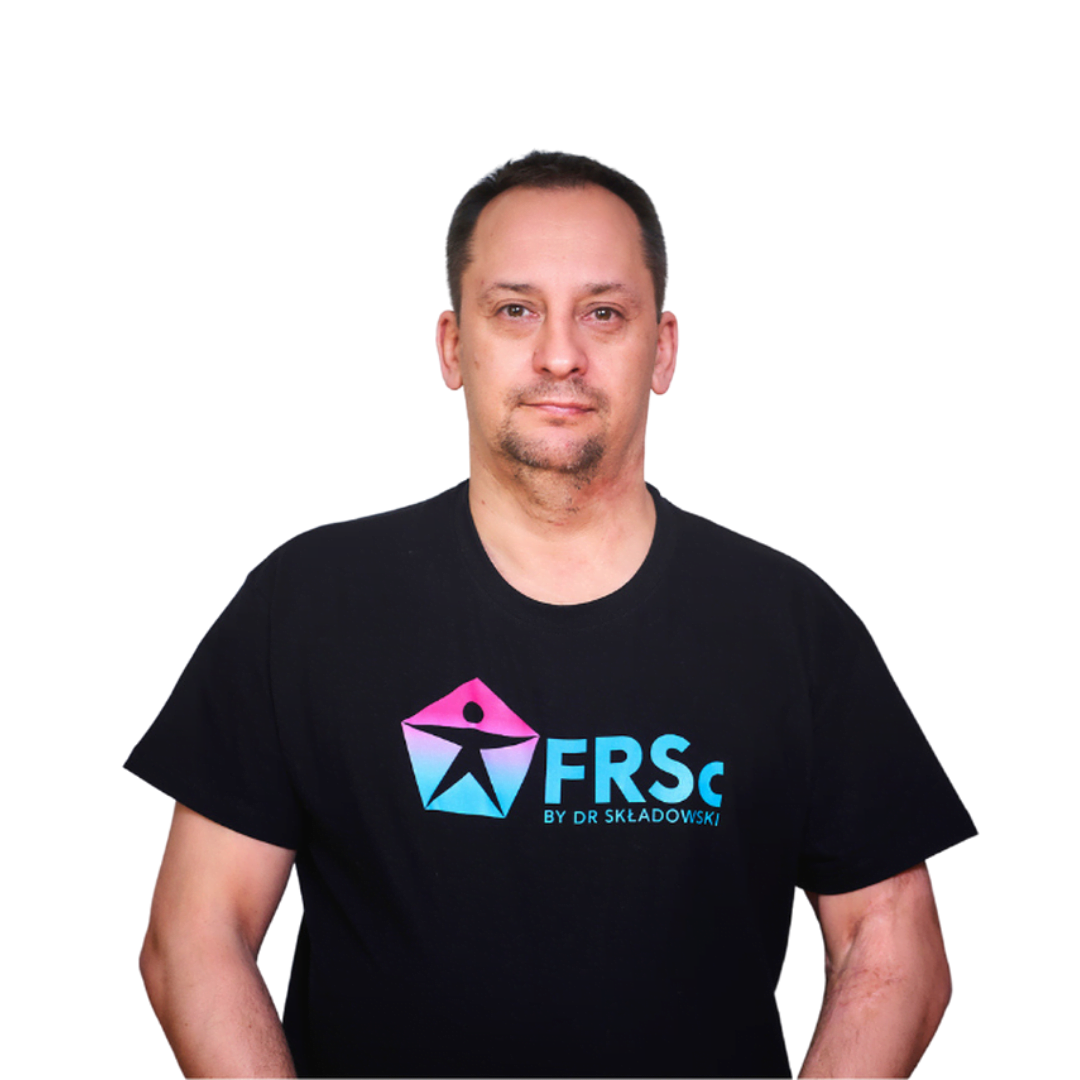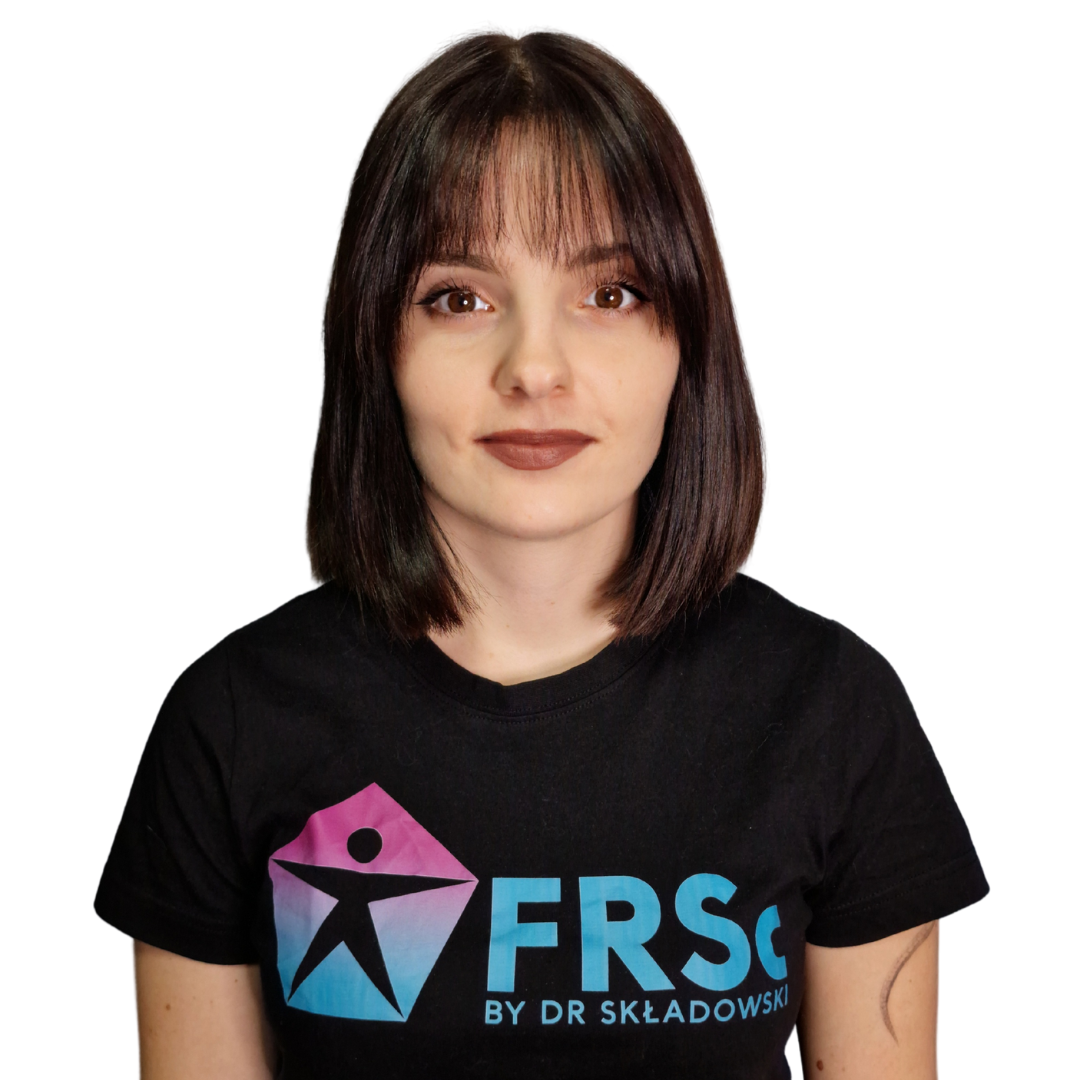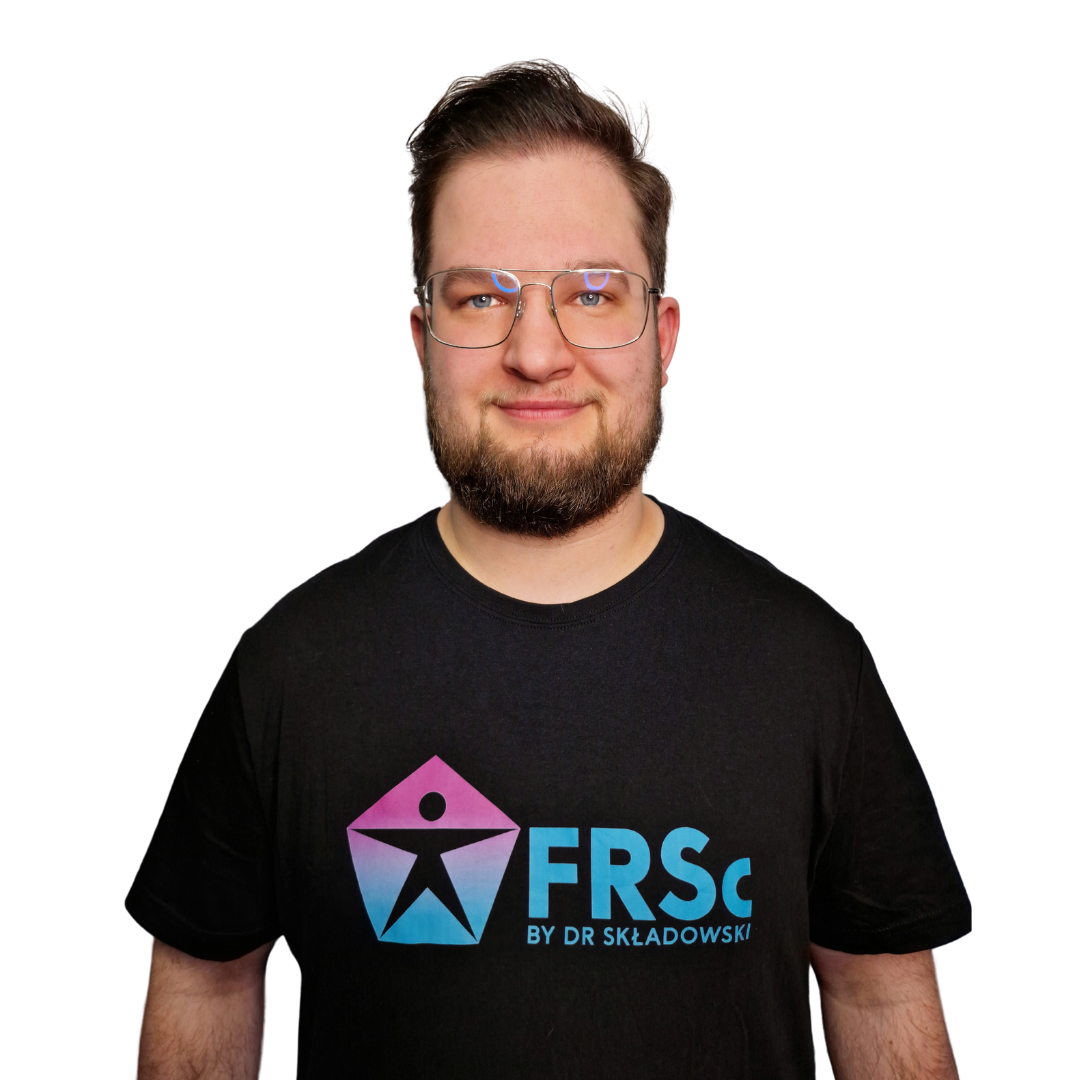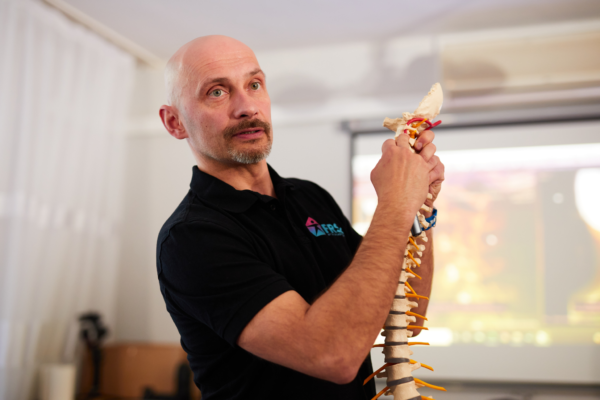
MEDYCYNA MANUALNA wg FRSc – edycja 95/96
MANUAL MEDICINE is our flagship course, covering a compendium of knowledge of the Five Regulatory Systems concept (FRSc).
Moduł I – 07-10 listopada 2024
Moduł II – 05-08 grudnia 2024
Moduł III – 10-12 stycznia 2025
Moduł IV – 14-16 lutego 2025
Moduł V – 28-30 marca 2025
Zakup pierwszego modułu szkolenia Medycyna Manualna,
jest równoznaczny z zapisem na całą edycję szkolenia.
Duration: 17 days
(4 + 4 + 3 + 3 +3)
Place: Spała
Funding
KFS / BUR
- Addtional
- Pinotherapy
- Module I: Fundamentals of the concept
- Module II: Tool Methods
- Module III: Synkinetic chains
- Module IV: Manipulations and short circuits
- Module V: Difficult conditions
- Instructors
- Students' opinions
Manual Medicine
Manual medicine is a branch of medicine dealing with the diagnosis and treatment of detected reversible functional changes in the musculoskeletal system. The foundation of manual medicine in the original approach of Radosław Składowski is concept of Five Regulatory Systems- FRSc.
Thorough knowledge of anatomy and physiology combined with the ability to use the principles of the five regulatory systems and manual proficiency in healing techniques developed by Składowski often allow for a spectacular restoration of the broadly understood correct function as well as maintaining conditions that prevent the deepening of pathologies.
The assumption of the method developed by the orthopedic doctor Radosław Składowski is to teach the students so that after completing each module he or she will be able to independently lead the patient out of the pathological process at an increasingly higher level.
What does the manual medicine course teach physiotherapists?
• restoring the proper functioning of our body, mainly the musculoskeletal system
• stopping disease progression
• slowing down the progression of disease processes that cannot be stopped
• accelerating the healing of injuries (sprains, fractures, bruises) and inflammations
• impact on restoring homeostasis of internal organs, which leads to their autoregulation and recovery from internal, metabolic and some neurological diseases.
Module 0 - Pinotherapy
Course of Pinotherapy is a mandatory course for people who want to take part in the next modules of Manual Medicine according to FRSc. Therefore, the Module I program does not include a complete coverage of the theory of the Five Regulatory Systems, but only complements this knowledge with new, more detailed information and techniques. Among them are:
- Discussion of the so-called a/c ligaments and the phenomenon of pseudo-stumps (spring effect)
- Demonstration of techniques, i.e. "KAT Udarowy"
- Developing knowledge in the field of compartment development
- Development of theories and hypotheses regarding the formation of neurocompartments
- Expanding the characteristics of lipodynia zones with visceral correlations and their use in abdominal surgery
- Expanding the theory regarding the IV and V regulatory system
- Complementing the techniques dedicated to the IV regulatory system with articular manipulation techniques and subsequent occlusal techniques
Due to the amount of knowledge (both theoretical and practical) presented to students during FRSc courses, before some courses/modules the student receives a prescript designed to facilitate the absorption of material during the course as much as possible. In addition, in order to consolidate the knowledge transferred, the trainees also receive postsciptum after part of the courses/modules. The information contained therein relates to and complements the most difficult and extensive parts of the training/training modules. Both the materials provided before and after the course are created e.g. based on the opinion of previous training graduates and observations of the training staff.
We invite physiotherapy students and representatives of medical professions to the course: doctor, dentist, surgeon, physiotherapist, nurse, midwife, paramedic, massage technician, osteopath, medical assistant, orthopedic technician, occupational therapist.
Do you work in another medical profession? Contact us!
Course of Pinotherapy is a mandatory course for people who want to take part in the next modules of Manual Medicine according to FRSc. Therefore, the Module I program does not include a complete coverage of the theory of the Five Regulatory Systems, but only complements this knowledge with new, more detailed information and techniques.
Pinotherapy is an entry-level course based on the Five Regulatory Systems concept (FRSc). The course is a kind of summary of the concept of manual medicine by Radosław Składowski and therefore it is recommended as an introduction to our flagship course of Manual Medicine.
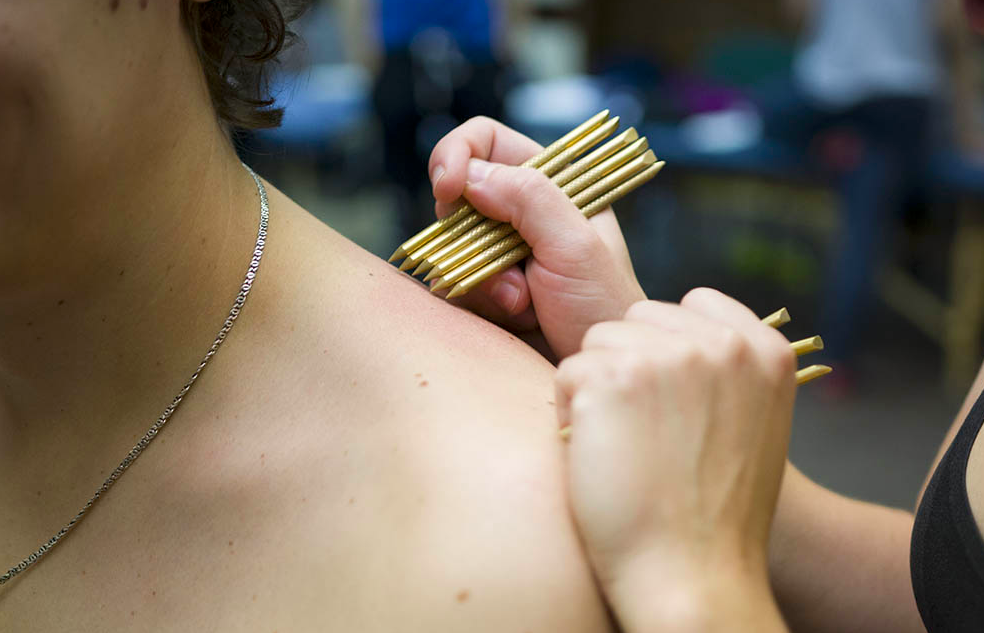
Pinotherapy is a collection of diagnostic and therapeutic methods and techniques for selected musculoskeletal disorders. The course forms a closed and coherent whole. It gives useful and safe tools to work with a wide range of patients. Pinotherapy can be both a separate therapeutic method and be used as a supplement to functional diagnostics or manual therapy in other concepts used or previously learned by the student.
The course is dedicated to people with medical education. The course is aimed at presenting the student with therapeutic thought according to the concept of the Five Regulatory Systems (FRSc) by Składowski, with particular emphasis on clinical reasoning, so that the course graduate uses the presented techniques safely and prudently.
Pinotherapy is used in the treatment of a number of orthopedic and neurological diseases, in acute and chronic pain syndromes, e.g. injuries and overload syndromes. It can also be used as part of a comprehensive therapy of functional disorders. As a method that uses various stimuli, it is adapted to work with patients of all ages.
9:00 – 10:00
Opening of the course, discussion of organizational issues, introduction of participants and instructors
10:00 – 10:30
Definition of Manual Medicine in the FRS concept
10:30 – 12:00
Układ Regulacyjny I – Piezoaktywny. Przypomnienie podstaw teoretycznych: podział receptorów oraz ich funkcje, zjawisko piezoelektryczne i mechanotransdukcja – możliwe znaczenie w przebiegu powstawania i leczenia patologii w I Regulatorze, wyszczególnienie punktów i stref piezoaktywnych, omówienie więzadeł typu A/C oraz zjawiska tzw. efektu sprężynki, charakterystyka dolegliwości bólowych pacjenta, typologia pacjenta.
12:00 – 12:15
Break
12:15 – 14:00
Układ Regulacyjny II – Humoralny. Przypomnienie podstaw teoretycznych dotyczących powstawania
kompartmentów, przykłady kompartmentów, zjawisko neurokompartmentu, charakterystyka dolegliwości bólowych pacjenta, typologia pacjenta.
14:00 – 15:00
Lunch break
15:00 – 16:00
Układ Regulacyjny III – Autonomiczny Układ Nerwowy. Przypomnienie podstaw teoretycznych zagadnienia sympatykotonii i algodystrofii, omówienie dobowej aktywności AUN oraz charakterystyki dolegliwości bólowych pacjenta, typologia pacjenta.
16:00 – 16:30
Practical part - improving the skills of palpation of lipodynia zones
16:30 – 16:45
Break
16:45 – 17:30
Układ Regulacyjny IV – Układ pozapiramidowy. Przypomnienie podstaw teoretycznych, łańcuch ósemki gadziej,
typologia pacjenta.
17:30 – 18:00
Część praktyczna: zespoły zwarciowe, kat udarowy.
09:00 – 10:00
Powtórzenie kluczowych zagadnień z dnia poprzedniego, odpowiedzi na pytania.
Układ Regulacyjny V – zjawisko Skórnych Stref Odczynowych. Przedstawienie trzech hipotez terapeutycznych.
10:00 – 11:30
Pojęcia swoiste dla Medycyny Manualnej FRSc: podział narządu ruchu na obnar i osnar, podział łańcuchów na segmentarne, odcinkowe oraz globalne, omówienie zjawisk kinematycznych istotnych w medycynie manualnej, podział i omówienie zakresów ruchu w stawach – teoretyczny wstęp do manipulacji stawowych, podział oporów stawowych, mobilizacje oscylacyjne, zjawisko karbu, łańcuch synkinetyczny – definicja popularna, rodzaje przeciążeń i zablokowań w układzie ruchu człowieka.
11:30 – 11:45
Break
11:45 – 12:30
Coupled movements
Practical learning of spinal manipulation - preparation for proper techniques
12:30 – 14:00
Biomechanics in FRSc - Newton's laws of motion.
Targeted manipulations of the cervical spine.
short-circuts
14:00 – 15:00
Lunch break
15:00 – 16:00
Biomechanics in FRSc - dynamics of a rigid body.
Practical preparation for manipulation of the lower spine
16:00 – 16:30
Introduction to manipulation of the thoracic spine
16:30 – 16:45
Break
16:45 – 18:00
General and detailed medical history,
Bóle: receptorowe, neurologiczne, rzutowane, brzucha.
09:00 – 13:00
Repetition of key issues from the previous day
Answers to questions
Headaches
13:00 – 14:00
Contraindications
14:00 – 15:00
Lunch break
15:00 – 16:30
Moving from research to therapy
Therapeutic assumptions
Diagnostic and therapeutic course
Contraindications
16:30 – 16:45
Break
16:45 – 18:00
Practical part:
Examination and manipulation of the sacrum
Short-circuts: M13, Eminentia, Uroboros
09:00 – 11:00
Repetition of key issues from the previous day. Answers to questions
Physical examination
Neurological tests
11:00 – 11:15
Break
11:15 – 13:15
Abdominal treatment
13:15 – 13:30
Break
13:30 – 15:00
Chain - Rest
Chain - Support
Manipulatios:
– translacyjna C1
– translacyjno – rotacyjna C1
– dystrakcyjna C0-C1
SUMMARY OF MODULE I, PASSING TEST, Handing OVER DIPLOMAS
Abreaction
9:00 – 10:00
Opening, discussion of organizational issues, introduction of Participants and Instructors
10:00 – 10:30
Definicja strategii leczenia FRSc – odreagowanie. Omówienie wskazań i przeciwwskazań do technik odreagowania
10:30 – 11:00
Sympathetic excitability state test
Discussion of the integument zones above the frontal lobe of the brain and projection fields of the body
Discussion of the methods of lipodynia development in the head area
Practical exercises of the discussed techniques
11:15 – 11:30
Coffee break
11:30 – 12:15
Discussion and practical preparation of craniofacial sutures
Discussion and practical preparation of craniofacia
Elements of auriculotherapy
Cranial short-circut
Practical exercises of the discussed techniques
12:15 – 13:00
Discussion of the role of the central lipodynia in abreaction techniques
Discussion and development of the trunk zones
Global abreaction with the reptile eight chain
Key pathologies that may occur peripherally
Reminder from the previous foot occlusal syndromes module in relation to abreaction
Practical exercises of the discussed techniques
13:00 – 14:00
Lunch break
14:00 – 16:00
Biomechanika cz. 1
16:00 – 16:15
Break
16:15 – 18:00
Biomechanika cz. 2
DRY NEEDLING by FRSc
9:00 – 9:30
Repetition of key issues from the previous day
Answers to questions
9:30 – 11:00
Introduction to dry needling techniques
Discussion of indications, contraindications and places of particular risk
Discussion of the rules of conduct: disinfection, type of needles, puncture sites, needling methods and post-treatment reactions
Principles of proper palpation and needle application
Procedure in emergency situations
11:00 – 11:15
Coffee break
11:15 – 13:00
Myogelosis of the greater thoracic fold line
Neurokompartment splotu ramiennego
Myogelosis of the trapezius muscle
The neurocompartment of the accessory nerve
Myogelosis of the distal segment of the latissimus dorsi
13:00 – 14:00
Lunch break
14:00 – 16:00
Subscapular area
Myogeloses and collar beams of the infraspinatus and the belly-tendon transition
Transition of the belly of the supraspinatus tendon
Collar beams levator scapulae / trapezius
16:00 – 16:15
Break
16:15 – 18:00
Collar beams of the deltoid
Radial nerve neurocompartment (upper part)
Collar beams of the brachialis/m. brachioradial
Radial nerve neurocompartment (lower part)
Neurocompartment of the median nerve
DRY NEEDLING by FRSc
9:00 – 9:30
Repetition of key issues from the previous day
Answers to questions
9:30 – 11:00
Wrist dry needling applications
Hand dry needling applications
Sternoclavicular joint disc
11:00 – 11:15
Coffee break
11:15 – 13:00
Semispinous capitis myogelosis
Paraspinal tissues
Pelvic ligaments
Coccyx
13:00 – 14:00
Lunch break
14:00 – 16:00
Neurocompartments of the superior gluteal nerve
Myogelosis of the gluteus maximus
Myogelosis of the gluteus medius
Myogelosis of the piriformis
Myogelosis of the tensor fascie latae
Neurocompartment of the Clunium nerves
Collar beams of the medial, posterior and lateral thigh
Clamping ring of the thigh on the back side
16:00 – 16:15
Break
16:15 – 18:00
Jumper's knee application
Runner's knee application
Medial meniscus
Synovial point of the knee
Collar beams of the shin
Attach the soleus to the lateral head of the gastrocnemius
DRY NEEDLING by FRSc
9:00 – 9:30
Repetition of key issues from the previous day
Answers to questions
9:30 – 11:00
Posterior tibiofibular syndesmosis
ATFL ligament
Dry needling applications in the area of the ankle joint
11:00 – 11:15
Coffee break
11:15 – 13:30
Dry needling foot applications
Pubic symphysis
Scars
13:30 – 14:30
Summary
Pytania i odpowiedzi
14:30 – 15:00
The end
9:00 – 9:45
Introduction
9:45 – 10:45
Fish Christmas tree and dragonflies chain THEORY
10:45 – 11:00
Coffee break
11:00 – 11:45
Fish Christmas tree and dragonflies chain PRACTICE
11:45 – 13:30
Łańcuch ósemki gadziej TEORIA i PRAKTYKA
13:30 – 14:30
Lunch break
14:30 – 15:00
Mobilizacje i manipulacje obręczy barkowej TEORIA i PRAKTYKA
15:00 – 15:20
Mobilizacje i manipulacje stawu łokciowego TEORIA i PRAKTYKA
15:20 – 15:45
Mobilizacje i manipulacje stawów nadgarstka TEORIA i PRAKTYKA
15:45 – 16:00
Coffee break
16:00 – 16:30
Mobilizacje i manipulacje biodra TEORIA i PRAKTYKA
16:30 – 17:00
Mobilizacje i manipulacje kolana TEORIA i PRAKTYKA
17:00 – 17:30
Mobilizacje i manipulacje stawu skokowego i kości stępu TEORIA i PRAKTYKA
17:30 – 18:00
Repetition of selected techniques of mobilization and manipulation PRACTICE
9:00 – 10:00
Towarzystwa pęczkowe TEORIA i PRAKTYKA
10:00 – 10:45
Łańcuchy lokomotoryczne: wykrok górny TEORIA i PRAKTYKA
10:45 – 11:00
Coffee break
11:00 – 11:45
Locomotor chains: upper stride continued PRACTICE
11:45 – 12:30
The stride of the lizard and the lemur THEORY
12:30 – 13:30
Locomotor chains: upper stride continued PRACTICE
13:30 – 14:30
Lunch break
14:30 – 15:30
Łańcuchy lokomotoryczne: odbicie górne TEORIA i PRAKTYKA
15:30 – 15:45
Locomotor chains: upward reflection disease entities THEORY
15:45 – 16:00
Coffee break
16:00 – 17:00
Łańcuchy lokomotoryczne: wykrok dolny TEORIA i PRAKTYKA
17:00 – 18:00
Łańcuchy lokomotoryczne: odbicie dolne TEORIA i PRAKTYKA
9:00 – 9:30
Postural chains theory
9:30 – 10:00
Postural chains practice
10:00 – 10:20
Support chain theory
10:20 – 11:00
Support chain practice
11:00 – 11:15
Coffee break
11:15 – 11:45
Rest chain theory
11:45 – 12:30
Rest chain practice
12:30 – 13:00
Respiratory chain theory
13:00 – 13:30
Respiratory chain practice
13:30 – 13:45
Coffee break
13:45 – 14:30
Repetition of selected manipulation techniques
14:30 – 15:00
Summary
9:00 – 9:20
Introduction
9:20 – 9:40
Omówienie i ćwiczenia łańcucha CWAŁU
9:40 – 10:00
Omówienie łańcucha kręcz
10:00 – 11:10
Omówienie stanów trudnych szyi
11:10 – 11:25
Break
11:25 – 11:45
Omówienie teorii zwarć i ich podział
11:45 – 13:00
Omówienie i praktyka wybranych zwarć i technik igłowania w stanach trudnych szyi
13:00 – 14:00
Lunch break
14:00 – 16:00
Manipulation part
16:00 – 16:15
Coffee break
16:15 – 18:00
Część Manipulacyjna c.d.
9:00 – 9:30
Wstęp – przypomnienie technik, pytania, omówienie trudności dnia poprzedniego
9:30 – 9:50
Stany trudne klatki piersiowej
9:50 – 10:40
Omówienie i podział stanów drętwień kończyn górnych. Ćwiczenie praktyczne wykorzystywanych technik
10:40 – 11:00
Break
11:00 – 12:00
Omówienie łańcuchów synkinetycznych spocznij/wsparcie. Ćwiczenie praktyczne wykorzystywanych technik
12:00 – 13:00
Omówienie mobilizacji naczyniowych. Ćwiczenia praktyczne wykorzystywanych technik
13:00 – 14:00
Lunch break
14:00 – 16:00
Manipulation part
16:00 – 16:15
Coffee break
16:15 – 18:00
Część Manipulacyjna c.d.
9:00 – 11:50
Omówienie zastosowania i praktycznego podejścia do lipodyni w FRSc
11:50 – 12:00
Coffee break
12:00 – 12:50
Omówienie i ćwiczenia wybranych zwarć w obrębie miednicy
12:50 – 14:00
Zabieg abdominalny- omówienie i ćwiczenia praktyczne
14:00 – 14:30
Panel dyskusyjny, omówienie pracy na przykładzie przypadków klinicznych
14:30 – 15:00
Zamknięcie modułu. Rozdanie certyfikatów.
9.00 – 9.15
Introduction
9.15 – 10.15
Nozologia w medycynie manualnej
10.15 – 10.45
Zmiany chemii jądra miażdżystego w przebigu dyskartrozy
10.45 – 11.00
Coffee break
11.00 – 11.50
Istotne parametry patologii trudnych stanów L-S
11.50 – 12.15
Łańcuch aresztujący Shift
12.15 – 13.00
Rzadkie wersje zablokowań tułowia, Diagnostyka różniocowa PJM
13.00 – 14.00
Lunch break
14.00 – 14.20
Omówienie patomechanizmów prowadzących do objawów rwy kulszowej
14.20 – 14.40
Modus operandi okresu ostrego
14.40 – 15.55
Aplikacje igłowe okresu ostrego – pokaz i praktyka (neurokompartmenty, muldy, igła w spojenie, ILL)
15.55 – 16.10
Coffee break
16.10 – 16.30
Modus Operandi okresu podostrego
16.30 – 16.45
Modus operandi okresu przewlekłego
16.45 – 17.15
Zwarcia pokaz i praktyka
17.15 – 17.30
Neuromoblizacja rozciągowa podłużna i poprzeczna – pokaz i praktyka
17.30 – 18.00
Klasyfikacja Przepuklin
9.00 – 9.10
Introduction
9.10 – 10.45
Stany trudne kkg ( dencentracja, SLAP, Bankart, Hill – Sachse)
10.45 – 11.00
Coffee break
11.00 – 11.45
Techniki Igłowe na bark (pokaz i praktyka)
11.45 – 12.15
Techniki manualne – zamrożony bark (pokaz i praktyka)
12.15 – 13.00
Stany trudne kończyny dolnej
13.00 – 14.00
Lunch break
14.00 – 15.30
Stany trudne kkd cd.
15.30 – 15.45
Coffee break
15.45 – 16.30
Stany trudne kkd cd.
16.30 – 18.00
Omówieni patomechanizmu i podział kręgomyków
9.00 – 11.15
Aplikacje igłowe (oczodół, żwacz)
11.15 – 11.30
Coffee break
11.30 – 13.45
Omówienie patomechanizmu i klasyfikacja bólów głowy
13.45 – 15.00
Wykład kończący

